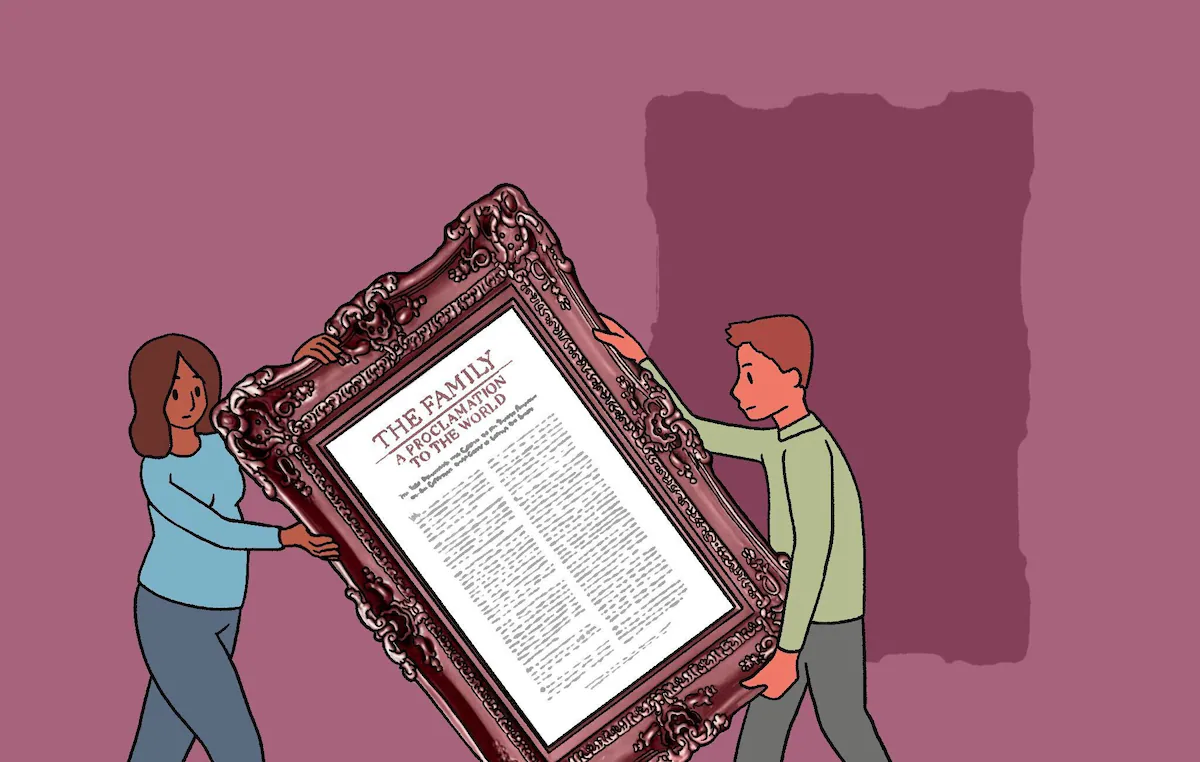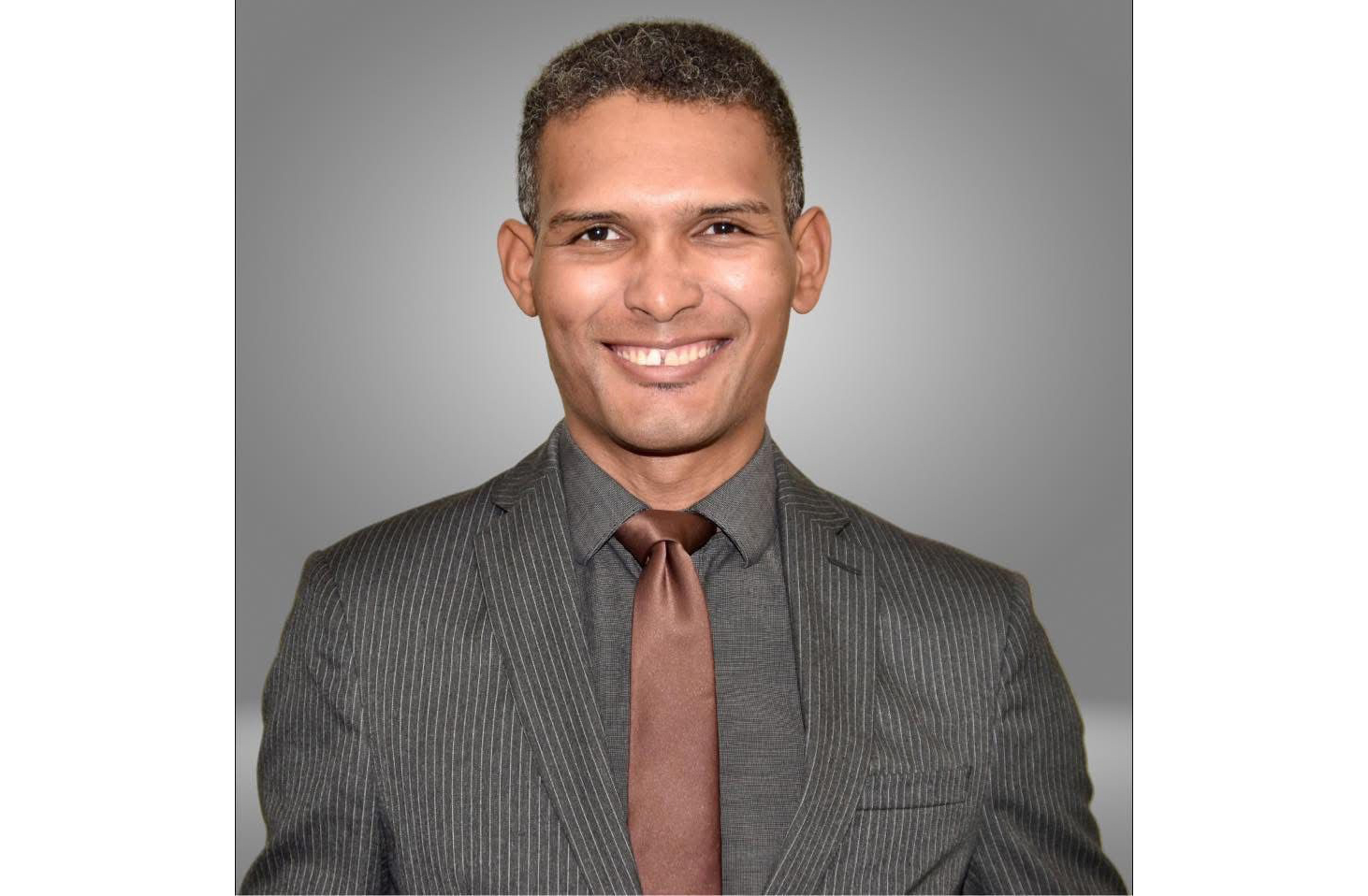
On Sept. 23, 1995, without much fanfare, church President Gordon B. Hinckley introduced “The Family: A Proclamation to the World” to a global gathering of Latter-day Saint women — a document that would come to play an outsize role in directing the faith’s views on gender, marriage, child care and society.
The nine-paragraph statement from top leaders of The Church of Jesus Christ of Latter-day Saints spelled out the faith’s belief in the divine nature of all human beings, the importance of marriage between one man and one woman, the sanctity of life, designated roles of mothers and fathers, consequences for sex outside marriage, and warnings about the disintegration of the family.
Almost immediately, the family proclamation (as it has come to be known) was heralded by many church leaders and members as an inspired, even revelatory message. Apostles and other authorities quoted it from the pulpit in the General Conferences, some suggesting it should be added to the scriptural canon. Believers often framed it and hung it on the wall as if it were Mormonism’s Nicene Creed. Latter-day Saint teachers used it as a resource and church-owned Brigham Young University included the study of it in a required course.
Thirty years later, though, some of its wording seems anachronistic — even in the conservative church.
“I thought it was very daring at the time and also very brave on the part of President Hinckley,” says Utah widow and real estate agent Peggy Lee Ball Fugal. “I got tired of studying it. Today, it feels a little dated.”
Indeed, much has changed in the Utah-based faith and in the world in the past three decades.
Back then, the church used the proclamation to defend its opposition to same-sex marriage. Now same-sex marriage is the law of the land in the United States and other countries, and the church endorsed the Respect for Marriage Act, which codified it while protecting the religious freedom of churches not to perform such unions.
Today’s economics have made it almost impossible to raise a family without both parents working and sharing child care. At the same time, in Africa and other parts of the global south, a strict division of labor between men and women makes no sense. Nor are families always limited to parents and children, but rather include grandparents, aunts and uncles, sometimes nonrelatives.
Even temple rituals, where Latter-day Saints covenant to God and spouses, have become increasingly egalitarian. Plus, the church now seldom talks about men “presiding” in the home, as the document states.
On top of that, the church now acknowledges that more than half its adult members are single. What does a declaration celebrating heterosexual marriage as the way to heaven say to them?
“I don’t like that it prescribes a family ‘ideal’ that is wildly out of sync with a global, diverse church with many family formations that are beyond the nuclear family mold — including queer, poly and extended kinship formations,” Alyssa Calder Hulme, a Latter-day Saint in Chicago, writes on Facebook. “Single folks, divorced families, co-parents, (open) adoption, — the world’s families are complicated, dynamic, and defy flattening. … If we claim to put families first, we can’t ignore most of them.”
In short, Hulme argues, “its ideas are a relic of the past, that of a much smaller, whiter, more conservative Western church and perspective.”
While acknowledging those limits, some continue to find the proclamation relevant.
“I want to be counted as one who supports it,” BYU-Idaho professor Benjamin Metcalfe Pacini writes in a message.
“I see real value in movements that emphasize dignity and inclusion. At the same time, I think the proclamation has helped us stay grounded. Some call these cultural shifts ‘wokeness.’ I’ve seen some good in them, but also chaff among the wheat.”
That Latter-day Saint rhetorical road map — “at least on questions of gender and family,” Pacini says, “has helped me discern between what is real and what isn’t.”
The evolution on LGBTQ+ members
“Marriage between a man and a woman is ordained of God.”
The proclamation, written partly to explain and defend the church’s opposition to same-sex marriage, is seen by many as ironic, if not hypocritical, given the church’s decadeslong practice of polygamy.
It also has been used as a justification for dismissing LGBTQ+ members and their families, causing hurt and trauma for them.
This is precisely what caused Dan Ursenbach to rethink the proclamation.
After being a Latter-day Saint bishop in Connecticut, where he counseled with “gay members and having family members who are queer,” Ursenbach changed his opinion of the supposedly doctrinal statements.
“Overall, there is much good,” says Ursenbach, who now lives in San Diego, “but some areas of the document struggle under the bright light of a gospel of goodness.”
Even as the leaders supported the Respect for Marriage Act, the faith opposes same-sex marriages and does not allow them in the church. That hasn’t stopped some LGBTQ+ members from using the proclamation’s broad outlines and “exceptions” to define their own lives.
Nathan Kitchen, former president of Affirmation, a support group for LGBTQ+ Latter-day Saints, loves what he calls the proclamation’s “escape clause”: “Disability, death, or other circumstances may necessitate individual adaptation.”
That’s where “queer Latter-day Saints” can be found, says Kitchen, who lives in Gilbert, Arizona — in the exception.
He is “adapting the proclamation to the circumstances of my own family: in the fidelity of my marriage to my husband, Matthew, and with my children and grandchildren.”
Surrounded by this love of extended family, Kitchen often wonders: “Do proclamations define families, or do families define families?”
Singlehood
Like their fellow LGBTQ+ members, single Latter-day Saints have to squeeze themselves into the proclamation’s exceptions — even if the never married, widowed or divorced adults outnumber married couples in the global faith.
“I’ve never liked it. I think families are great and, yes, a good foundation for society,” says Salt Lake City resident Joanne Rowland, who has remained single. “But the definition needs to be broad enough to include folks who never managed to get married. Aunts, uncles, cousins and friends maybe ought to be mentioned as important to strong families.”
There are congregations, conferences and special events for singles, but the goal seems mostly to help them pair up.
Some say there is no place for individual adult believers in the proclamation — even as they make up the majority in the pews — but as an exception to the heterosexual model.
Rigid roles
“Fathers are to preside over their families in love and righteousness and are responsible to provide the necessities of life and protection for their families. Mothers are primarily responsible for the nurture of their children.”
The proclamation does not condemn women working outside the home, but it does lay the responsibility of caring for children on them. Thus, many authorities have used its language to decry working women.
Yet, nearly 20 years ago, Hinckley told young women that marriage and family should be their priority, but that they should “also pursue educational programs which will lead to satisfying work and productive employment in case you do not marry, or to a sense of security and fulfillment in the event you do marry.”
More recently, President Camille Johnson, leader of the church’s worldwide women’s Relief Society, spoke about how she worked as a corporate lawyer, while having young children.
“My work,” Johnson told women last year, “was a means to an end in blessing my family.”
Mosiah Gonzalez, who teaches family studies at Weber State University, suggests the rigid roles described in the proclamation may not have “aged well.”
When was “the last time someone in General Conference said that women should stay at home?” Gonzalez asks. “Perhaps the LDS institution is silently recognizing economic pressure.”
He is curious to know “how many families are satisfied on a single income, assuming the main earner is not in a lucrative profession.”
Economic realities
In 2023, senior apostle Dallin H. Oaks, first counselor in the governing First Presidency, urged young couples not to delay marriage or childbearing.
Oaks, next in line to lead the global church, suggested couples go “forward with faith,” while acknowledging that the “housing market circumstances [are] less favorable than I and your grandparents encountered in our early years.”
The question of whether women should work outside the home or could righteously choose to do so “is now irrelevant,” says Salt Lake Tribune guest columnist Natalie Brown. “The ideal family prescribed in the proclamation is financially out of reach for many couples.”
Parenting is “very demanding,” Brown says in a message, “and there’s reason to regret that many families no longer have the choice of a parent staying home.”
A typical Latter-day Saint teenager in today’s world “has to assume — on statistics alone — that more than half of their adult life will not fit the [proclamation] model,” Latter-day Saint author and blogger Christian Kimball writes in a forthcoming volume. “In addition, many of them know their current home life [also does not reflect it.] In fact, given 21st-century economic realities, if you focus on the single-income factor alone, many becomes most.”
Eternal gender
“Gender is an essential characteristic of individual premortal, mortal, and eternal identity and purpose.”
Laurie Lee Hall, a transgender woman and former temple architect who was excommunicated from the church, initially cheered that sentiment in the proclamation. She, too, believed that gender is eternal. It’s just that her male body, she said, didn’t fit her identity.
For years, top Latter-day Saint leaders were not sure what to do with that statement and made no attempt to explain it further. That all changed, though, in October 2019, when Oaks defined gender as the “biological sex at birth.”
This shift in terminology, Hall says, “represented a dark day for transgender church members” and “is at the root of the church’s egregious restrictions now in place since last year against all who transition away from their biological sex at birth.”
To support that position, the church handbook and website point to the Bible, which says God created “male and female.”
Drawing on the work of writer Blaire Ostler, Ursenbach notes that “God also created night and day, but, alas, he didn’t go into the specifics of dawn and dusk, although they certainly exist.”
Ostler then compares that to “our queer siblings,” Ursenbach says. “In these Genesis verses, male and female, night and day, are not meant to be absolute binaries. God is claiming the extent of his creation, the beginning and the end, the comprehensive whole.”
What about intersex members, who are born with both sexual organs? Typically, medical professionals and parents make the decision about the sex of the child.
That presents lots of theological issues, Duane Jennings writes in his book, “Stumbling Blocks and Stepping-Stones: Including Lesbian, Gay, Bisexual, Transgender, and Intersex Children of God in the LDS Plan of Salvation.”
“If an intersex person is surgically assigned male sexual organs, raised as a boy, and ordained to the priesthood but in adolescence feels that he is intrinsically a girl who is attracted to boys, is this child of God a homosexual,” Jennings wonders. “Does she still have the priesthood?”
The proclamation “falls far short of its alleged purpose of promoting and supporting ‘real families,’” Jennings writes. “Rather, it’s a misguided attempt to justify and defend the false doctrine of ‘complementarianism.’ It ignores the natural world that God created.”
The next 30 years
As society and the church continue to be sifted and shaped by the times, will the proclamation still speak to millions of Latter-day Saints in diverse situations and regions?
It appears to have a hold on Oaks. Out of 344 references to the proclamation in General Conferences since it was announced, the former Utah Supreme Court justice has quoted it nearly 40 times, according to researcher Christian Anderson, more than any other speaker.
“Oaks has backed off recently,” Anderson notes, “but at one point he was quoting the proclamation almost as much as everyone else put together.”
Pacini, the BYU-Idaho professor, also believes it has an important and lasting message.
It “puts kids first in a world that rarely does,” he says. “The document affirms things that are broadly good and needed: We should love our children, be faithful to our spouses, and build families on forgiveness, kindness, and even wholesome recreational activities.”
When such basics “break down,” Pacini writes, “society pays a real price.”
He laments that the proclamation “has become a new battlefront in the culture wars,” the professor says. “Despite my strong support for it, I don’t see it as the whole of my devotion.”
It reflects the “core to my beliefs,” Pacini says, “but isn’t the totality of them.”
His faith is also about “peacemaking, dignity,” he says, “and following a carpenter from Bethlehem.”



